Today’s the day. We’re going to visit the Taj Mahal. It’s 6 am and we’re walking across the foyer of the Radisson Blue to meet our new French-speaking guide. I’m relieved that yesterday’s unsatisfactory guide is being replaced. From the corner of my eye I see a man standing alone and wonder if it’s him. “Oh dear”, says Jean Michel at that moment, “We’re out of luck, it’s the same guide as yesterday.” “I don’t believe it!”, I reply. “I’m very surprised to see you here,” I say when he reaches us. “We were not happy with your services yesterday and asked for another guide. We were told we would get one.” He looks taken aback. Jean Michel explains that his attitude was unprofessional and he failed to show us two important sights at Fatehpur Sikri.
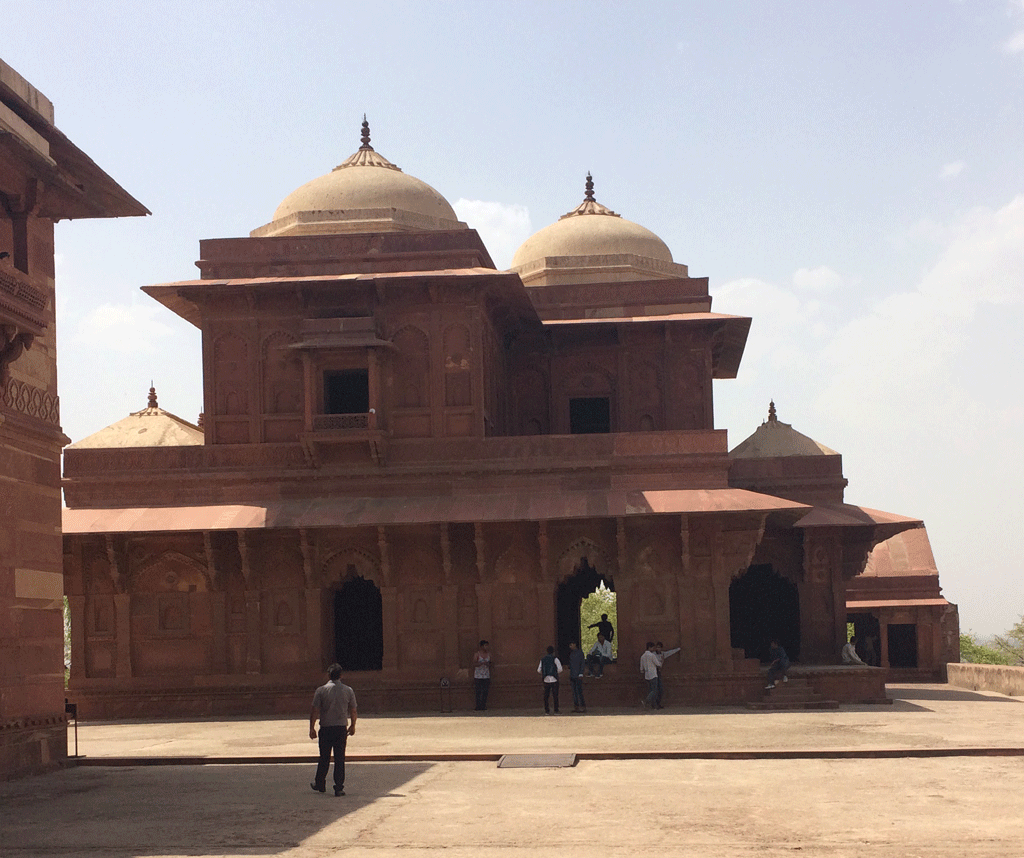
“I have three children,” he pleads, “you have to give me another chance.” I’m shocked at his tactics. “I’m self-employed, too”, I answer. “If I don’t satisfy my customers, they don’t give me any more work. I’m sorry.” We move towards the entrance in search of our driver, Rajendar. The man I noticed earlier is now outside and I hear him speak to the guide in Hindi. Jean Michel gets into the car and the guide starts to follow. I address the second man in French and ask if he’s our new guide. He says he is so I briefly explain what has happened. I tell yesterday’s guide that he is not to come with us and ask the new guide to join us. He had not been told he is replacing someone else.
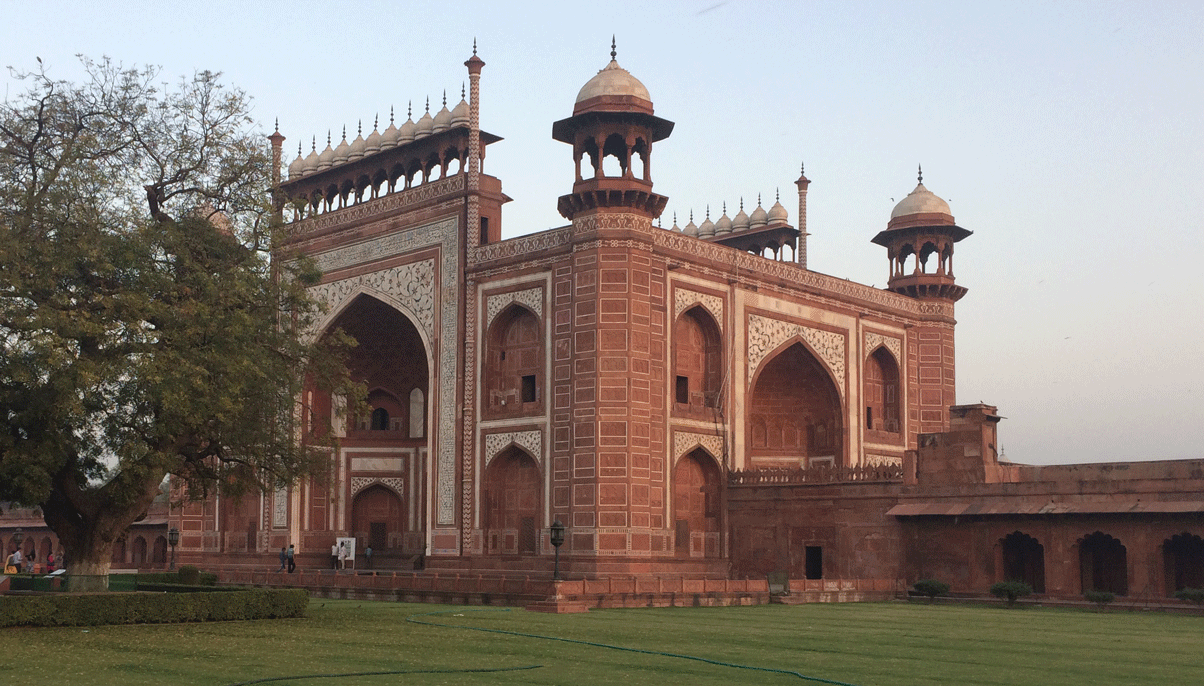
We get in the car. Vik introduces himself and asks the usual get-to-know-you questions. We can already tell that he’s our sort of guide. He speaks good French, is easy to understand and obviously enjoys his job. Within a few minutes we’re in the Taj Mahal parking lot. Vik tells us to join our respective body-search queues and goes to get the tickets. At 6.30, the queues start moving. We all meet up inside and start walking towards the gate leading to the Taj Mahal.
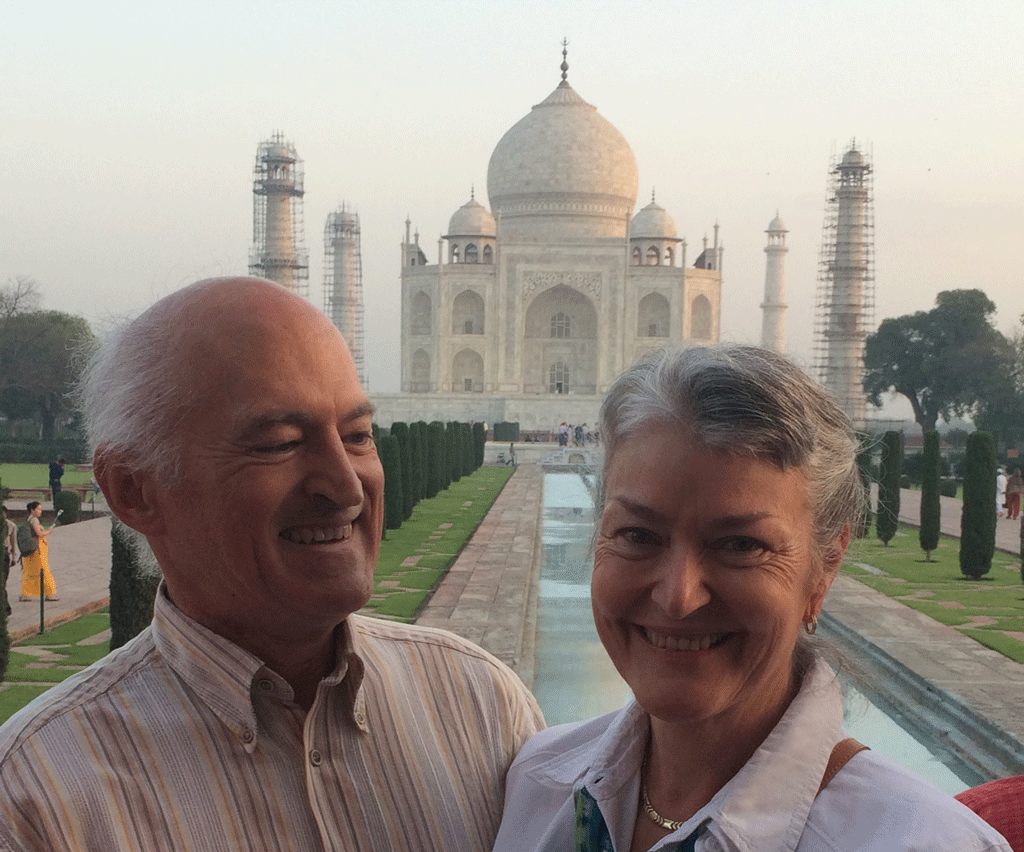
As we walk through the gate, the magic starts to work. Although I was disappointed yesterday, I’m not today. To my astonishment tears come to my eyes. The Taj Mahal is absolutely majestic. Despite the many visitors milling around us, I feel as though we are there alone! Vik offers to take our photo then takes us to one side where it’s less crowded.
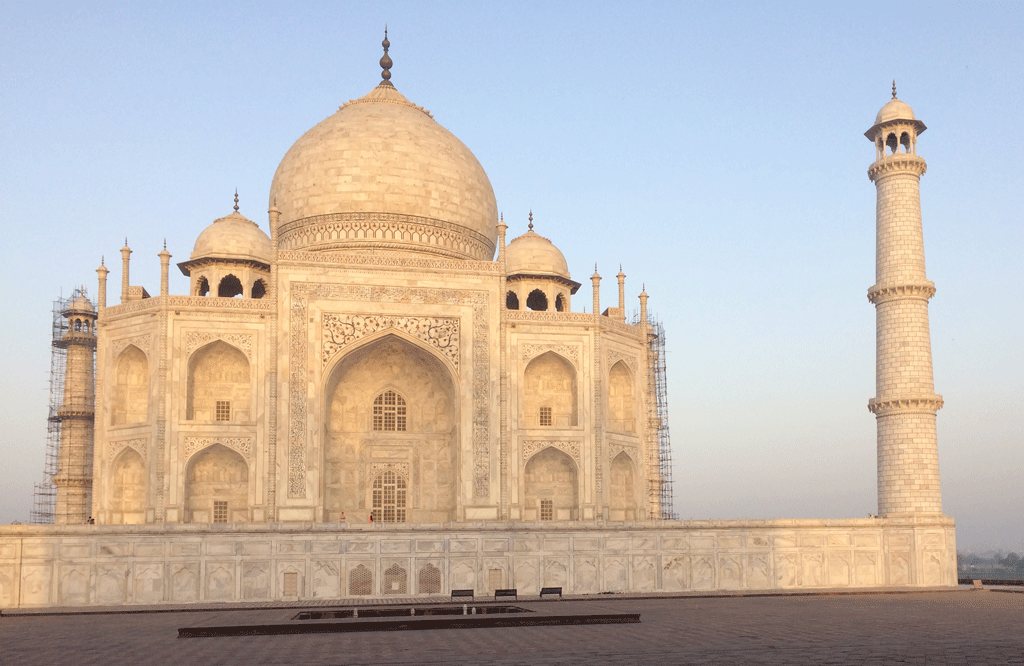
We walk down to the Taj Mahal then up the steps and across the entrance so that we are on the right side facing the east façade (all the façades are identical). There is NO ONE. Vik sits us down so we can watch the changing light on the building and tells us the story of the Taj Mahal. Commissioned in 1632 by the Mughal emperor, Shah Jahan (who reigned from 1628 to 1658), it was built to house the tomb of his favourite wife, Mumtaz Mahal. Before she died giving birth to their 14th child, she asked him to build a mausoleum that would show how much he loved her.
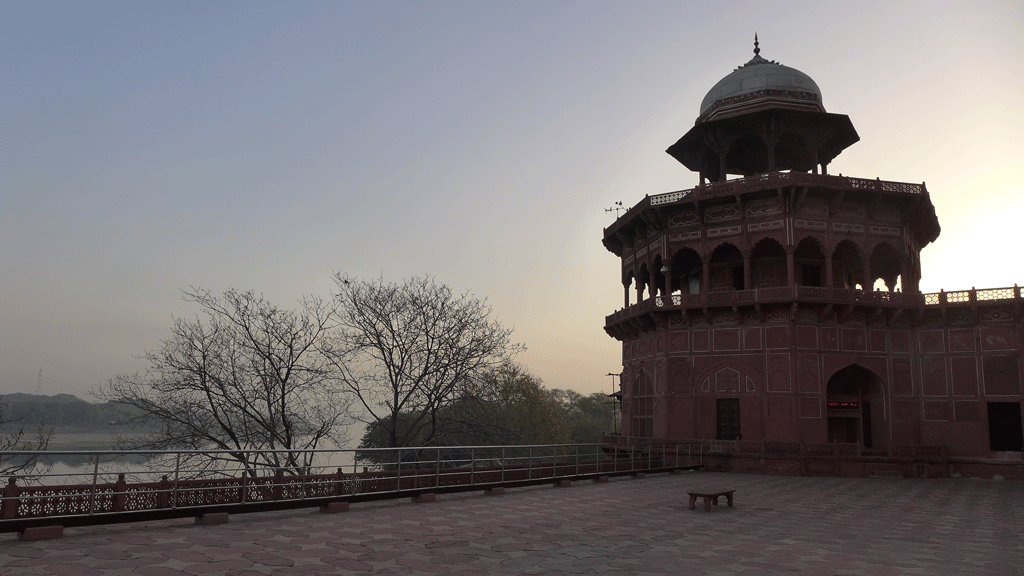
It was essentially completed eleven years later but other phases of the project continued for another ten years. The cost was colossal and some 20,000 artisans were employed. It became a UNESCO World Heritage Site in 1983 for being “the jewel of Muslim art in India and one of the universally admired masterpieces of the world’s heritage”.
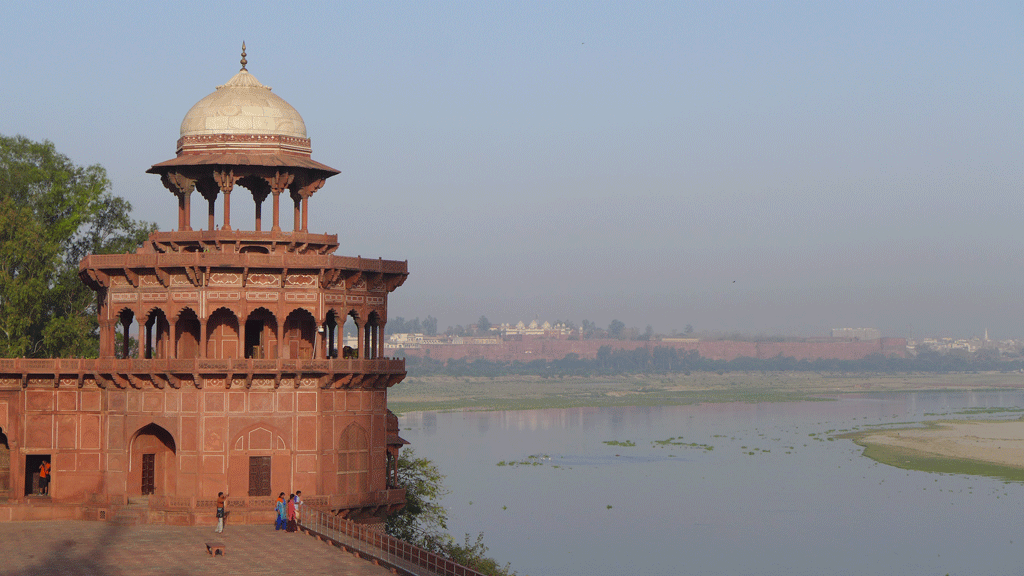
We then walk behind the Taj Mahal alongside the river and over to the other side where we can admire the second of the two perfectly symmetrical buildings on each side, a mosque.
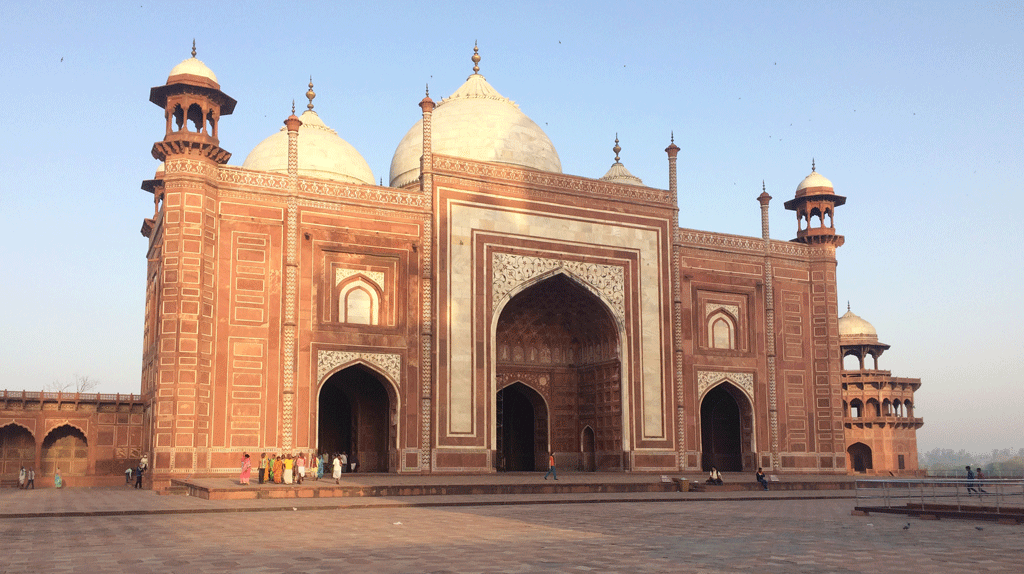
As we approach the Taj Mahal from the main façade, we are given overshoes. There do not appear to be any clothing restrictions. I have purposely worn loose cotton above-the-ankle trousers and a long-sleeved shirt over a short-sleeved blouse just in case.
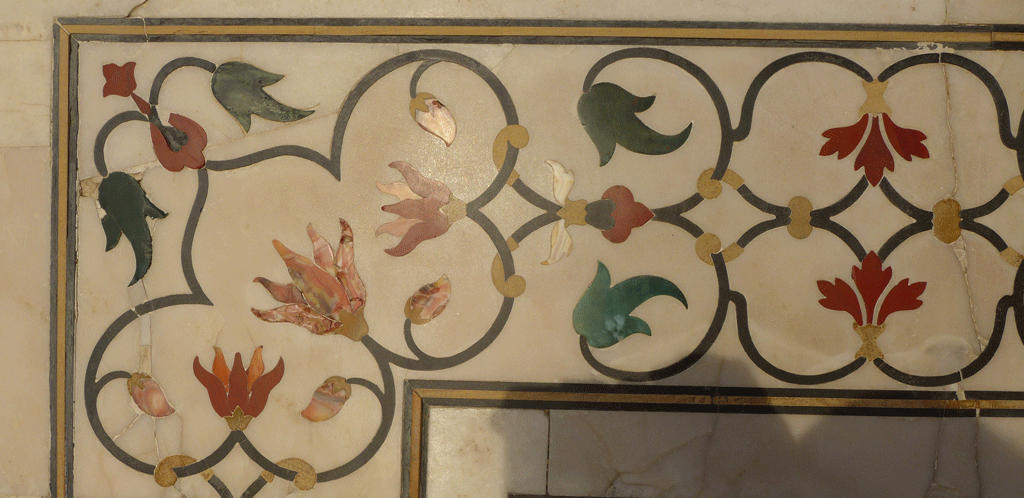
Before we go into the building itself, we admire the beautiful gemstone inlay work on the white marble façade. Vik explains the colours: the red is tourmaline, the green jade, the black onyx and the blue lapis lazuli. There is also mother-of-pearl.
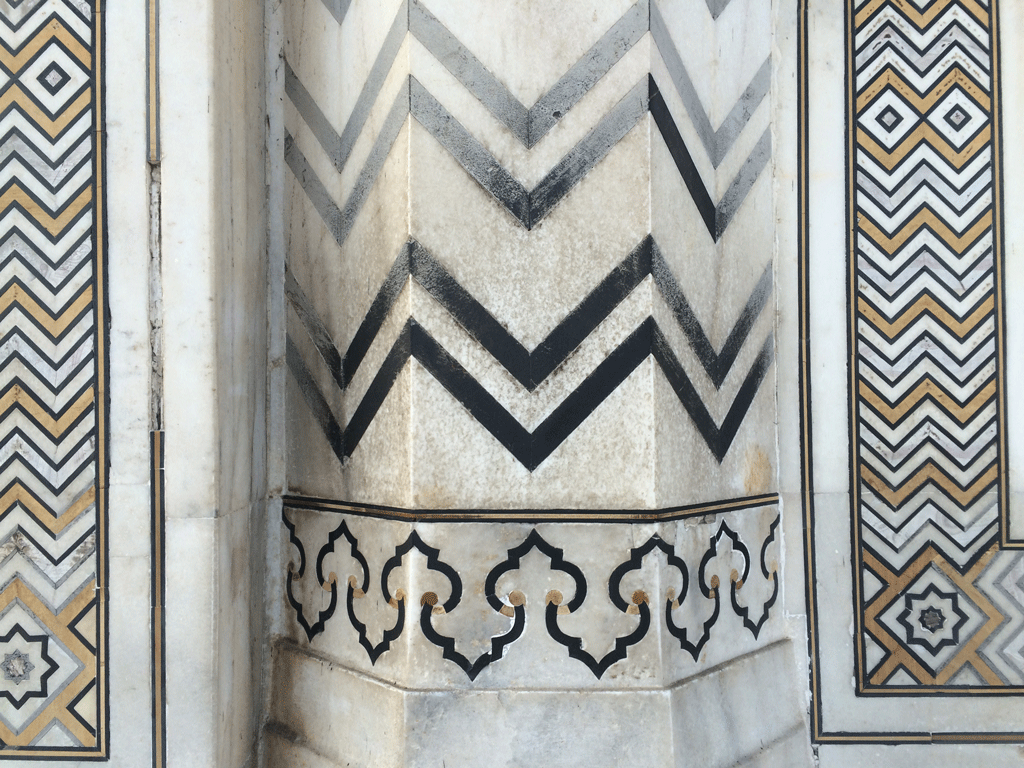
Inside, we see Mumtaz Mahal’s tomb and more extraordinary inlay work (no photos allowed). The octagonal inner chamber is designed so it can be entered from each side, although only the door facing the garden to the south is used. The 25-metre interior walls are surmounted by a “false” interior dome decorated with a sun motif. There are eight arches at ground level while four central upper arches form balconies or viewing areas. Each exterior window has an intricate screen cut from marble while each chamber wall is highly decorated with bas-reliefs, intricate lapidary inlay and calligraphy panels which reflect, in miniature detail, the design elements seen on the exterior of the complex.
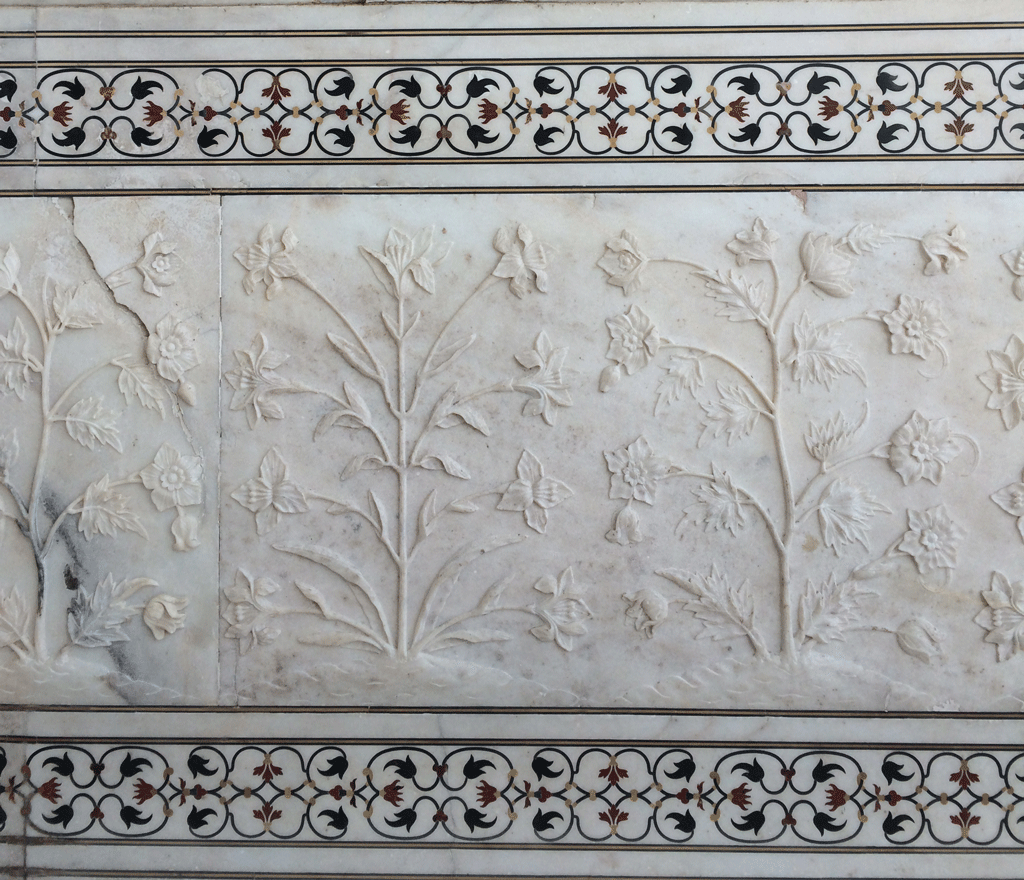
As we come out, we take off our overshoes and put them in a bin then start to walk back towards the entrance gate. Vik continues his story of Shah Jahan. He was known as the “Just Emperor”. Working long hours, he kept an eye on every detail of the administration of his Empire. He made the roads safe for travelers, severely punishing looters and robbers. He developed agriculture and improved trade with foreign countries. People became rich and State revenue increased. He made Delhi his capital.
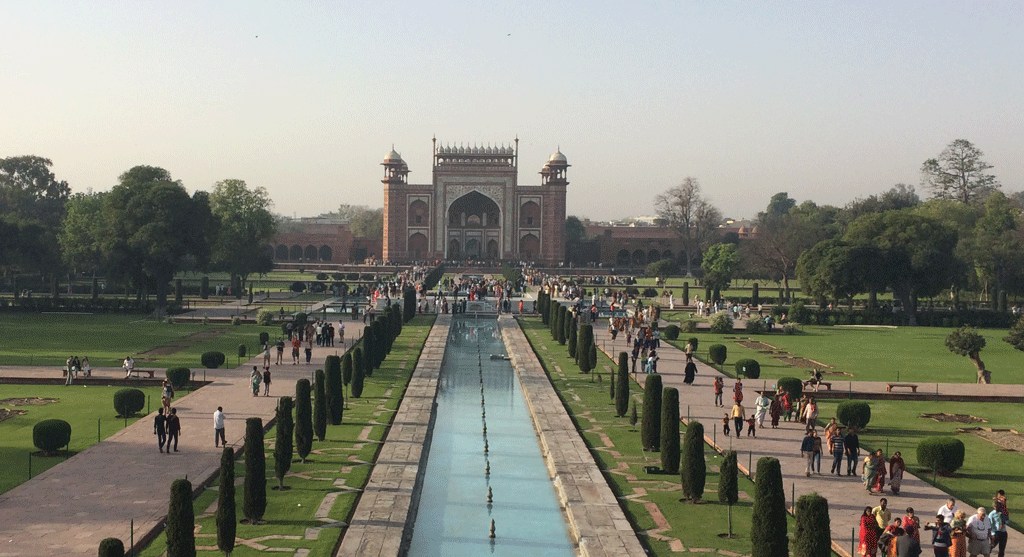
But he never did get over his wife’s death and the construction of the Taj Mahal eventually left the kingdom in financial ruin. He is said to have gone crazy in his old age although the official version is illness. His third son Auranzeb needed to move quickly if he were to become Mughal Emperor – his eldest brother had become regent, and would thus automatically become emperor when Shah Jahan died, having consolidated his power and position as regent. In 1658, Aurangzeb raised an army, marched on Agra, and defeated the regent. He then declared Shah Jahan incompetent and put him under house arrest in the Octagonal Tower in Agra Fort (a beautiful addition that he himself had constructed) which has a direct view of the Taj Mahal. He died there in 1666 leaving the world with one of its most beloved monuments.
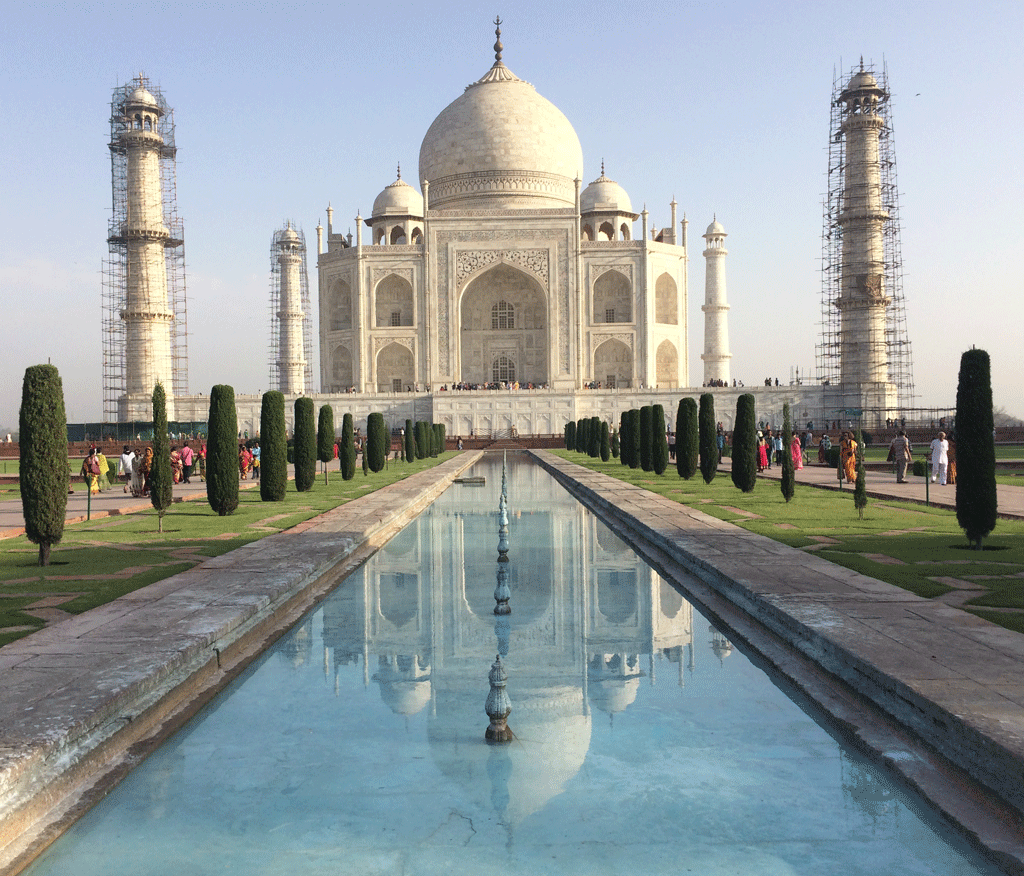
I finally find a spot where I can take a front view of the Taj Mahal reflected in the water. I have to wait my turn because there are lots of other people having their photos taken or taking selfies in exactly the same spot.
Reluctantly, we leave but it’s time to go back to the Radisson Blue for breakfast before visiting Agra Fort.



